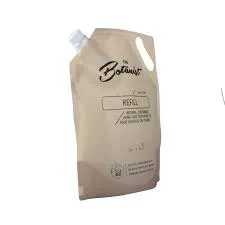- Afrikaans
- Albanian
- Amharic
- Arabic
- Armenian
- Azerbaijani
- Basque
- Belarusian
- Bengali
- Bosnian
- Bulgarian
- Catalan
- Cebuano
- chinese_simplified
- chinese_traditional
- Corsican
- Croatian
- Czech
- Danish
- Dutch
- English
- Esperanto
- Estonian
- Finnish
- French
- Frisian
- Galician
- Georgian
- German
- Greek
- Gujarati
- haitian_creole
- hausa
- hawaiian
- Hebrew
- Hindi
- Miao
- Hungarian
- Icelandic
- igbo
- Indonesian
- irish
- Italian
- Japanese
- Javanese
- Kannada
- kazakh
- Khmer
- Rwandese
- Korean
- Kurdish
- Kyrgyz
- Lao
- Latin
- Latvian
- Lithuanian
- Luxembourgish
- Macedonian
- Malgashi
- Malay
- Malayalam
- Maltese
- Maori
- Marathi
- Mongolian
- Myanmar
- Nepali
- Norwegian
- Norwegian
- Occitan
- Pashto
- Persian
- Polish
- Portuguese
- Punjabi
- Romanian
- Russian
- Samoan
- scottish-gaelic
- Serbian
- Sesotho
- Shona
- Sindhi
- Sinhala
- Slovak
- Slovenian
- Somali
- Spanish
- Sundanese
- Swahili
- Swedish
- Tagalog
- Tajik
- Tamil
- Tatar
- Telugu
- Thai
- Turkish
- Turkmen
- Ukrainian
- Urdu
- Uighur
- Uzbek
- Vietnamese
- Welsh
- Bantu
- Yiddish
- Yoruba
- Zulu
Effective Oxygen Absorbers for Enhanced Food Preservation and Shelf Life Extension
The Importance of Oxyfree Oxygen Absorbers in Food Preservation
In today's world, where food preservation and safety have become paramount concerns, oxyfree oxygen absorbers play a crucial role. These innovative products are designed to enhance the shelf life of a variety of food items by eliminating oxygen from their packaging, thus preventing spoilage and maintaining freshness. Understanding how they work and their benefits can greatly influence both commercial and household food storage practices.
Oxygen, while essential for life, is a significant factor in the degradation of food. When food is exposed to air, it can become stale, lose nutritional value, develop off-flavors, and become susceptible to harmful bacteria and mold. This is especially true for items like dried fruits, nuts, and grains, which can easily spoil if not stored properly. This is where oxyfree oxygen absorbers come into play.
Oxyfree oxygen absorbers are small packets containing iron powder, salt, and other ingredients. When these packets are placed inside food packaging, the iron reacts with oxygen, effectively reducing the oxygen level to less than 0.01%. This is essential for maintaining the food's quality because many microorganisms and enzymes that contribute to spoilage require oxygen to thrive. By drastically reducing the available oxygen, oxyfree absorbers not only extend the shelf life of products but also preserve their taste, texture, and nutritional content.
One of the most significant advantages of using oxyfree oxygen absorbers is the extension of shelf life. Products that typically have a short lifespan can be stored for much longer periods when these absorbers are utilized. For example, dried foods can last for months or even years without losing their quality. This is particularly beneficial for businesses in the food industry, such as manufacturers and retailers, where minimizing waste and maximizing product lifespan are crucial for profitability.
oxyfree oxygen absorbers

Moreover, oxyfree oxygen absorbers can greatly enhance food safety. By inhibiting the growth of pathogens and spoilage organisms, these absorbers help reduce the risk of foodborne illnesses. This is especially relevant in today’s climate, where consumers are increasingly aware of food safety issues and demand higher standards from food producers.
Additionally, oxyfree oxygen absorbers contribute to environmental sustainability. By reducing food waste, they help decrease the environmental impact associated with food production and disposal. When food is wasted, all the resources used to produce, transport, and store that food are also wasted. Therefore, by helping to extend the life of food products, oxyfree absorbers play a part in promoting a more sustainable food system.
When using oxyfree oxygen absorbers, it is essential to follow the manufacturer's guidelines to ensure maximum effectiveness. Factors like the type of food, packaging material, and storage conditions can affect the performance of these absorbers. Therefore, proper usage is imperative.
In conclusion, oxyfree oxygen absorbers are an invaluable tool in the realm of food preservation. They not only extend the shelf life of various food items but also enhance food safety and contribute to sustainability efforts. With the growing demand for high-quality, safe, and long-lasting food products, the role of oxyfree oxygen absorbers will likely continue to grow in significance. For both consumers and businesses alike, embracing this technology can lead to improved food quality, reduced waste, and a more efficient food supply chain. Whether in your kitchen or on a production line, oxyfree oxygen absorbers are a solution worth considering for anyone serious about food preservation.













